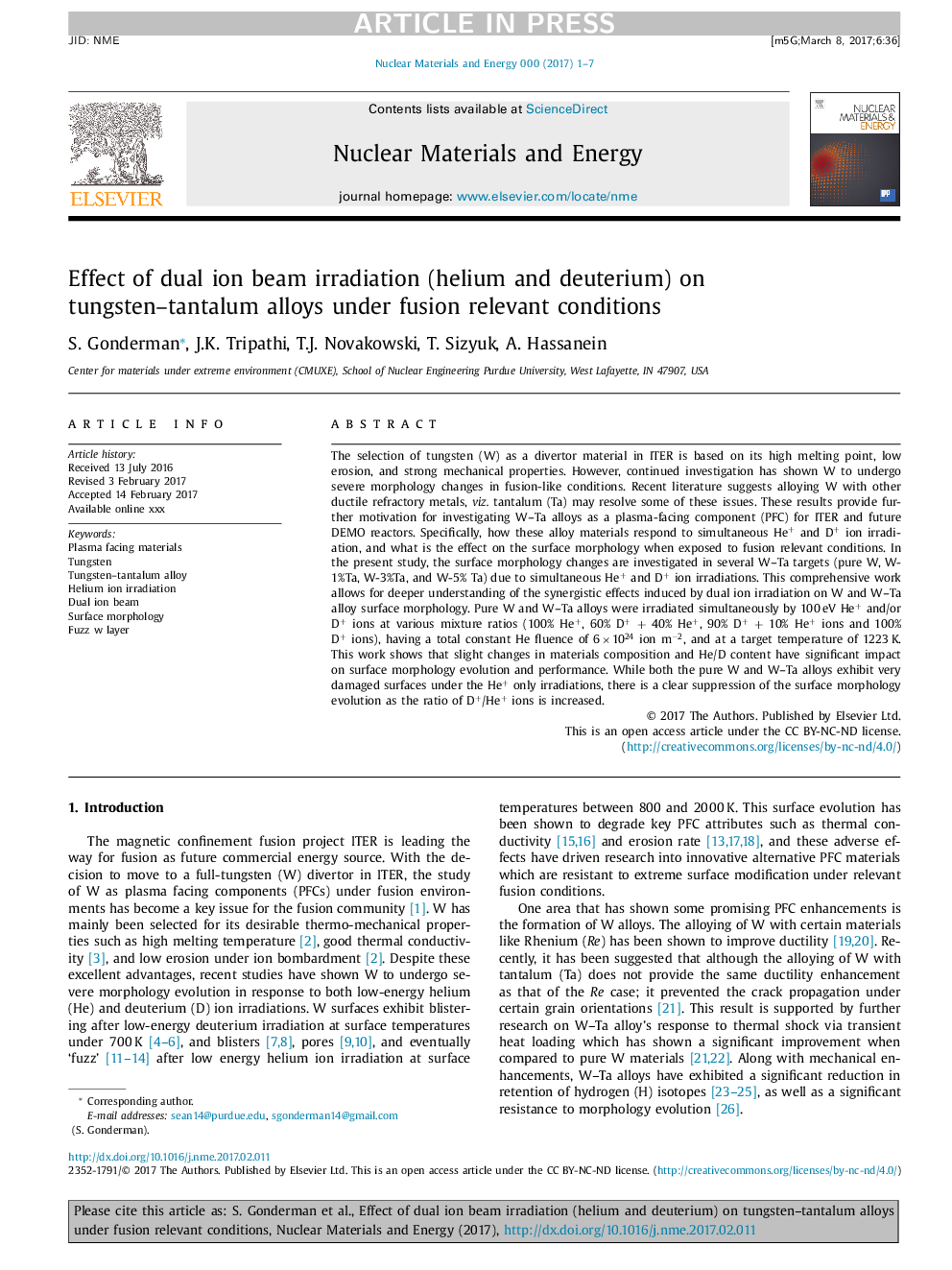| Article ID | Journal | Published Year | Pages | File Type |
|---|---|---|---|---|
| 7987481 | Nuclear Materials and Energy | 2017 | 7 Pages |
Abstract
The selection of tungsten (W) as a divertor material in ITER is based on its high melting point, low erosion, and strong mechanical properties. However, continued investigation has shown W to undergo severe morphology changes in fusion-like conditions. Recent literature suggests alloying W with other ductile refractory metals, viz. tantalum (Ta) may resolve some of these issues. These results provide further motivation for investigating W-Ta alloys as a plasma-facing component (PFC) for ITER and future DEMO reactors. Specifically, how these alloy materials respond to simultaneous He+ and D+ ion irradiation, and what is the effect on the surface morphology when exposed to fusion relevant conditions. In the present study, the surface morphology changes are investigated in several W-Ta targets (pure W, W-1%Ta, W-3%Ta, and W-5% Ta) due to simultaneous He+ and D+ ion irradiations. This comprehensive work allows for deeper understanding of the synergistic effects induced by dual ion irradiation on W and W-Ta alloy surface morphology. Pure W and W-Ta alloys were irradiated simultaneously by 100Â eV He+ and/or D+ ions at various mixture ratios (100% He+, 60% D+ + 40% He+, 90% D+ + 10% He+ ions and 100% D+ ions), having a total constant He fluence of 6Â ÃÂ 1024 ion mâ2, and at a target temperature of 1223Â K. This work shows that slight changes in materials composition and He/D content have significant impact on surface morphology evolution and performance. While both the pure W and W-Ta alloys exhibit very damaged surfaces under the He+ only irradiations, there is a clear suppression of the surface morphology evolution as the ratio of D+/He+ ions is increased.
Related Topics
Physical Sciences and Engineering
Energy
Nuclear Energy and Engineering
Authors
S. Gonderman, J.K. Tripathi, T.J. Novakowski, T. Sizyuk, A. Hassanein,
